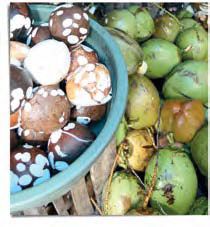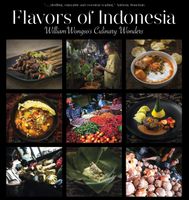Advertisement
Coconut
Kelapa
Published 2016

Should mankind be allowed to choose only one kind of fruit, surely it would be the coconut. The trees can be processed to build a complete house – the palm-wood for construction material and furniture, the leaves dried to make a thatched roof, brooms, mats, and the fibers that protect the outer shell of the nut are used to stuff mattresses, make brushes, brooms, kindling, ropes, and so forth. The coconut trees can provide us with just about anything – a place to live, oil to cook, water to drink, flesh to eat, soaps, shampoo, and various kinds of remedies! Southeast Asia, India, and South America were among the first places to cultivate the coconut. The trees thrive on sandy soil, are highly tolerant to salinity, rely on abundant sunlight and regular rainfall, require high humidity, and grow effectively in a mean annual temperature of 27° C. It comes as no surprise that in 2008, Indonesia was the second largest producer of coconut in the world, after The Philippines.


